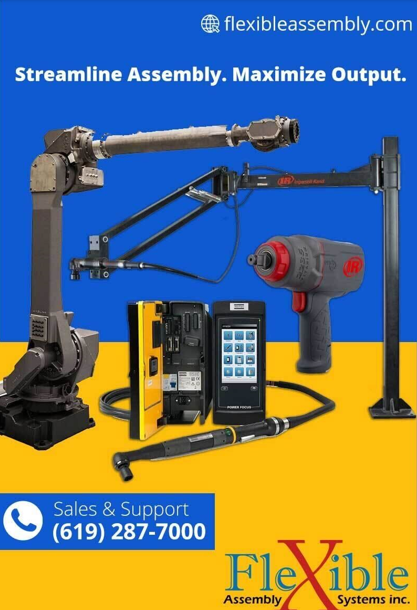Torque tool choice shapes product quality. You can pick a manual torque screwdriver or an electric torque screwdriver. One suits small runs. The other handles high-volume drives. Electric torque devices deliver exact force each turn. That boost lifts yield and cuts defect risk. This post breaks down the key ways that an electric torque screwdriver outperforms a manual model.
Accuracy and Repeatability
Precise force at each fastener makes or breaks joint integrity. Manual torque screwdrivers often vary by ±3 percent. Electric models hold within ±1 percent. You gain:
- Uniform clamp force across every joint
- Fewer leaks in sealed assemblies
- Lower chance of vibration-induced loosening
Electric tools use a sensor to cut power at the target torque. Manual tools use a clutch or spring that slips once force peaks. That slip point may follow a slight extra twist. Over thousands of fasteners those tiny overshoots add up. Electric tools keep that variance at bay.
Speed and Cycle Time
Fast driver cycles yield higher throughput at busy lines. An electric torque screwdriver can:
- Spin the bit at high rpm for rapid thread run-down
- Shift to low rpm for final torque in one unit
- Stop instantly at preset force
Manual tools demand two steps: push fastener flush then twist until a click. Each step takes time. Multiply that by thousands of joints and you lose minutes or hours. An electric device completes the task in a single motion. That drop in cycle time boosts output per shift.
Operator Comfort and Fatigue
Wrist torque travels through the handle of a manual tool. Each click taxes muscle. After hundreds of joints a tech feels fatigue and error risk climbs. Electric screwdrivers place torque load on a motor. The operator just guides the tool. Grip force stays low. Wrist effort falls. Techs maintain focus on assembly not muscle strain.
Data Trace and Quality Proof
Electric torque tools pair with software for full torque traces. You can:
- View real-time torque readout on a display
- Export data via USB or network
- Archive record per fastener for audit
Manual tools rely on sample log sheets and chart stickers. You record a handful of readings by hand. That patchwork may raise audit questions. An electric device offers end-to-end trace proof without manual note taking.
Total Cost of Ownership
Manual torque screwdrivers cost about $40–$60 each. Calibration runs at $40–$50 per session. High-volume shops may calibrate once per year. Electric tools start near $300. Battery packs and chargers add $50–$100. Calibration may cost $50–$75 and occur twice per year in heavy use. Yet you offset that with:
- Lower defect cost from tight torque control
- Labor savings from faster cycles
- Reduced downtime from fatigue-related errors
A simple payback calculation often shows ROI within one year on a busy line.
Power Source and Mobility
A manual torque screwdriver needs no power. You work anywhere without worry of battery loss. An electric model runs on battery or cord. A quality battery lasts a full shift at moderate use. A corded device attaches to a reel at the station. You can keep spare batteries on hand for nonstop operation. Choose the power arrangement that fits your plant layout.
Calibration and Service
Calibration keeps torque specs tight. Both tool types need periodic checks on a test bench. Techs set multiple torque points then adjust spring or sensor parameters. Service time per tool runs about an hour. Best practice calls for:
- Six-month interval for electric tools with high run counts
- Twelve-month interval for manual tools in lower-volume use
- On-site or lab service options
- Spare tool swap to avoid station downtime
A solid service plan maintains accuracy and uptime.
Setup and Training
Manual tools offer a simple dial or collar to set torque. Techs twist until a click confirms force. Electric tools require menu entry for torque and speed. Modern models use intuitive displays and one-button program recall. A short training session covers:
- Torque set procedure
- Program recall steps
- Data export basics
- Battery and cord care
Most teams adapt to electric tools within a day.
Maintenance and Downtime
Manual tools need a quick brush-off after each shift. Keep the clutch free of debris. Replace O-rings per service guide. Electric tools require battery health checks and motor vent cleaning. Inspect wiring or hose reels. Replace brushes or circuit boards as needed. A spare-tool pool cuts risk of station halt during repair.
Why Choose Flexible Assembly Systems?
Flexible Assembly Systems offers a full line of torque tools and support. You gain:
- Wide range of manual and electric torque screwdrivers
- On-site or lab calibration service in 24 hours
- Spare-part stock at regional hubs
- Operator training at your facility
- Software support for data export and analysis
Our team helps you match tool choice to run volume and torque range. We aim for smooth tool rollout and ongoing support.
Next Steps
Map your torque needs by listing fastener count, torque specs, cycle-time targets, and budget. Contact our specialists for a custom demo. We can show you cycle-time gains and torque-trace proof at your line.
Final View
Electric torque screwdrivers outpace manual models on key fronts: accuracy repeatability, cycle time, operator comfort, data trace, and total cost. Manual tools keep initial cost low and need no power source. Electric tools yield higher yield, lower defect cost, and full audit proof. Chart your needs and pick the tool that fits your run size and spec range. Flexible Assembly Systems stands ready to guide your tool choice and support your plant goals.




